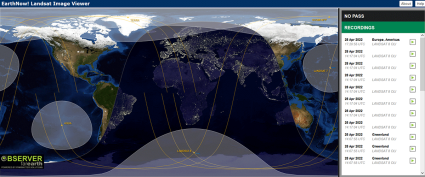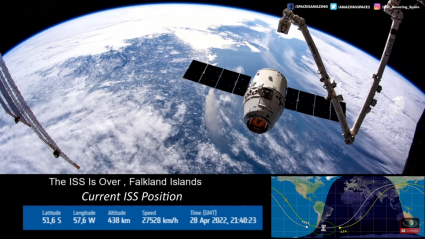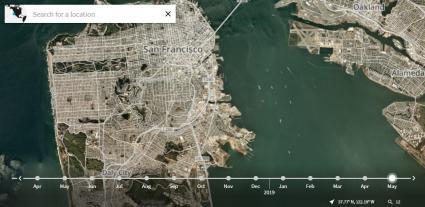Are There Apps for Live Satellite Feeds

Live Satellite Maps to See Earth in Real-Time
Ever since Apollo 17 captured the famous Blue Marble photograph of Earth in 1972, we have had a good idea of what our planet looks like.
But have you ever wondered what Earth looks like right NOW?
This article aims at showing you how to view a live satellite map of the world.
From near real-time satellite views to live feeds, make sure to stay tuned and give them all a try.
1. NASA Worldview

NASA's Worldview is a real-time satellite map that is available online. It shows satellite imagery, real-time cloud cover, and 800+ layers of the world.
It uses Corrected Reflectance (True Color) from Terra/MODIS that refreshes daily. But the platform is able to publish images generally within 60 to 125 minutes after a satellite observation.
Using its slick interface, you can zoom in and out of different areas. But the resolution of the imagery is 250 meters per pixel so you can't see too much detail.
2. USGS EarthNow (FarEarth Observer)

The USGS pulls together Landsat 7 and 8 recordings through the EarthNow application. After a ground station receives a Landsat transmission, it takes just seconds for it to be uploaded on the USGS EarthNow platform.
You have the option of choosing to view the image in true color, which is similar to how our human eyes see the world. Otherwise, you can also select the vegetation analysis band combination to highlight chlorophyll fluorescence.
One of the best things about the application is how it scans the Earth similar to a live stream video. And don't forget that if you want to download Landsat imagery, check out this guide that we are linking to.
3. ISS Satellite Feed

It's true that the International Space Station has a high-definition streaming video (HDEV) mounted on it. And if you haven't seen it before, it's one of the neatest things you can find on YouTube.
Although you don't get georeferenced information that you would on a map, the ISS satellite feed provides a real-time planetary perspective from 248 miles (400 kilometers) above Earth.
And it's seen its fair share of excitement. From the dancing Aurora Borealis over the Arctic to thunderclouds and lightning bolts, some things just look better from space.
4. Real-time Weather App

Weather apps like Ventusky leverage satellite layers from GOES-16, GOES-17, and EUMETSAT. Not only do you get near-real-time weather data, but it also includes forecasts.
This stylish mapping platform includes wind, rain, and temperature in an animated map. Plus, it incorporates data from forecast models to predict weather outcomes around the world.
If you're looking for an alternative to Ventusky, don't forget to check Earth Null School which has similar capabilities. Supercomputers power Earth Null School weather forecasts with updates every 3 hours.
5. Planetscope

First, PlanetScope isn't free. But it's the sharpest picture of Earth that we can achieve every day. This is why its motto is: "The Entire Earth, Everyday".
Thanks to the lightweight and low-cost constellation of 200+ nanosatellites or CubeSats, each and every small payload brings big opportunities to the world of satellite imaging.
Planet is able to put it all together into its cloud-based imagery platform, PlanetScope. As such, it delivers images of Earth at 3 meters per pixel every day, which is uncontested in satellite imagery.
Live Satellite Maps
Although there are several options for a live satellite map of the world, each one has its advantages and disadvantages.
If you're looking for a live feed, the ISS feed is the perfect option.
But if you want the latest georeferenced imagery, then NASA's Worldview and USGS EarthNow are perfect for you.
Otherwise, the sharpest and near real-time satellite view would be Planetscope at 3 meters per pixel and a new image of Earth every day.
Source: https://gisgeography.com/live-satellite-map/
0 Response to "Are There Apps for Live Satellite Feeds"
Post a Comment